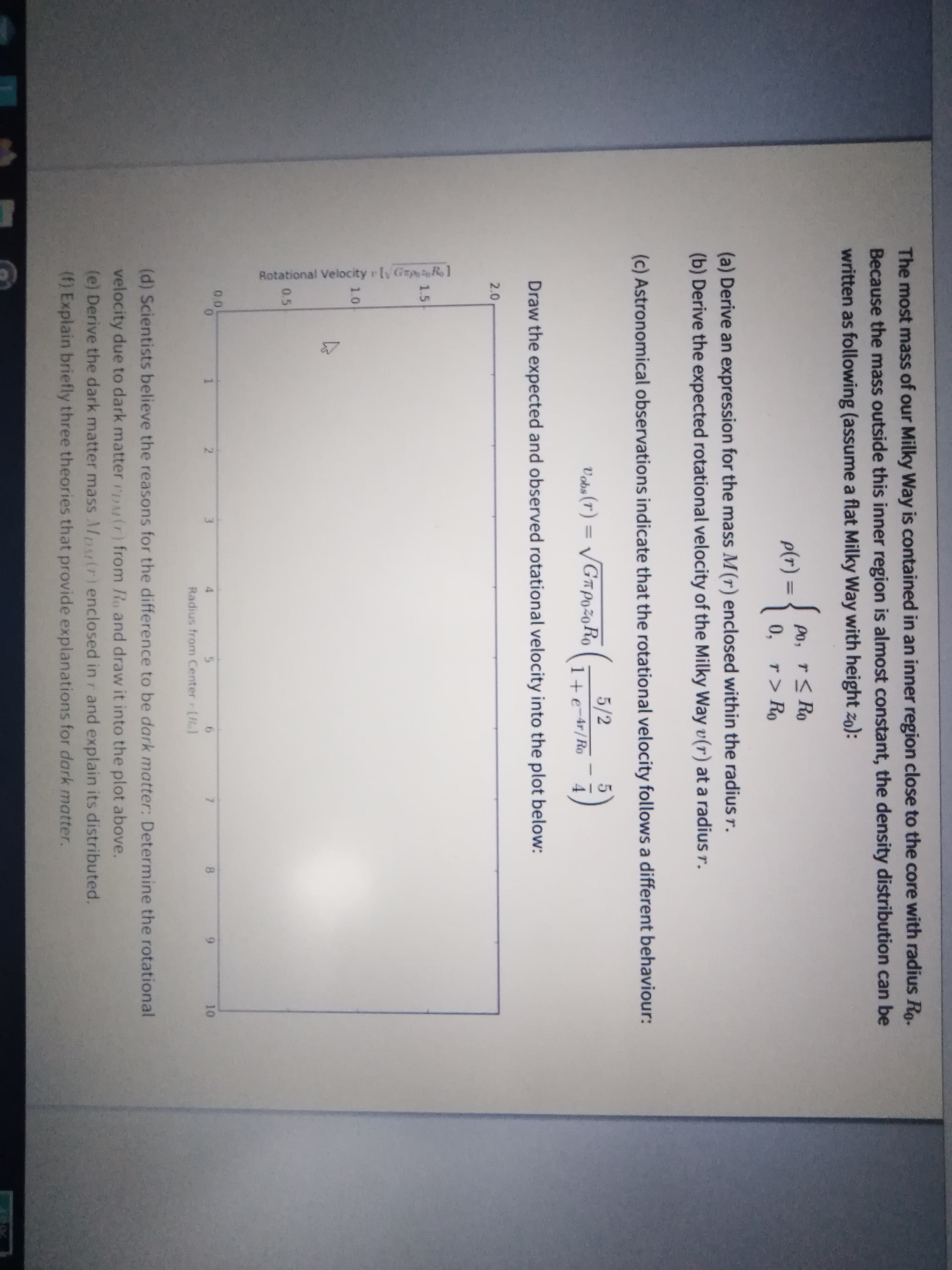4. The most mass of our Milky Way is contained in an inner region close to the core with radius Ro. Because the mass outside this inner region is almost constant, the density distribution can be written as following (assume a flat Milky Way with height zo): { Po, r< Ro 0, r> Ro p(r) = %3D (a) Derive an expression for the mass M(r) enclosed within the radius r. (b) Derive the expected rotational velocity of the Milky Way v(r) at a radius r. (c) Astronomical observations indicate that the rotational velocity follows a different behaviour: Vebo (r) = /GĦPoz0Ro 5/2 1+ e-4r/Ro
4. The most mass of our Milky Way is contained in an inner region close to the core with radius Ro. Because the mass outside this inner region is almost constant, the density distribution can be written as following (assume a flat Milky Way with height zo): { Po, r< Ro 0, r> Ro p(r) = %3D (a) Derive an expression for the mass M(r) enclosed within the radius r. (b) Derive the expected rotational velocity of the Milky Way v(r) at a radius r. (c) Astronomical observations indicate that the rotational velocity follows a different behaviour: Vebo (r) = /GĦPoz0Ro 5/2 1+ e-4r/Ro
Related questions
Question
Astrophysics

Transcribed Image Text:4.
The most mass of our Milky Way is contained in an inner region close to the core with radius Ro.
Because the mass outside this inner region is almost constant, the density distribution can be
written as following (assume a flat Milky Way with height zo):
{
Po, r< Ro
0, r> Ro
p(r) =
%3D
(a) Derive an expression for the mass M(r) enclosed within the radius r.
(b) Derive the expected rotational velocity of the Milky Way v(r) at a radius r.
(c) Astronomical observations indicate that the rotational velocity follows a different behaviour:
Vebo (r) = /GĦPoz0Ro
5/2
1+ e-4r/Ro
Expert Solution
This question has been solved!
Explore an expertly crafted, step-by-step solution for a thorough understanding of key concepts.
Step by step
Solved in 4 steps with 3 images
